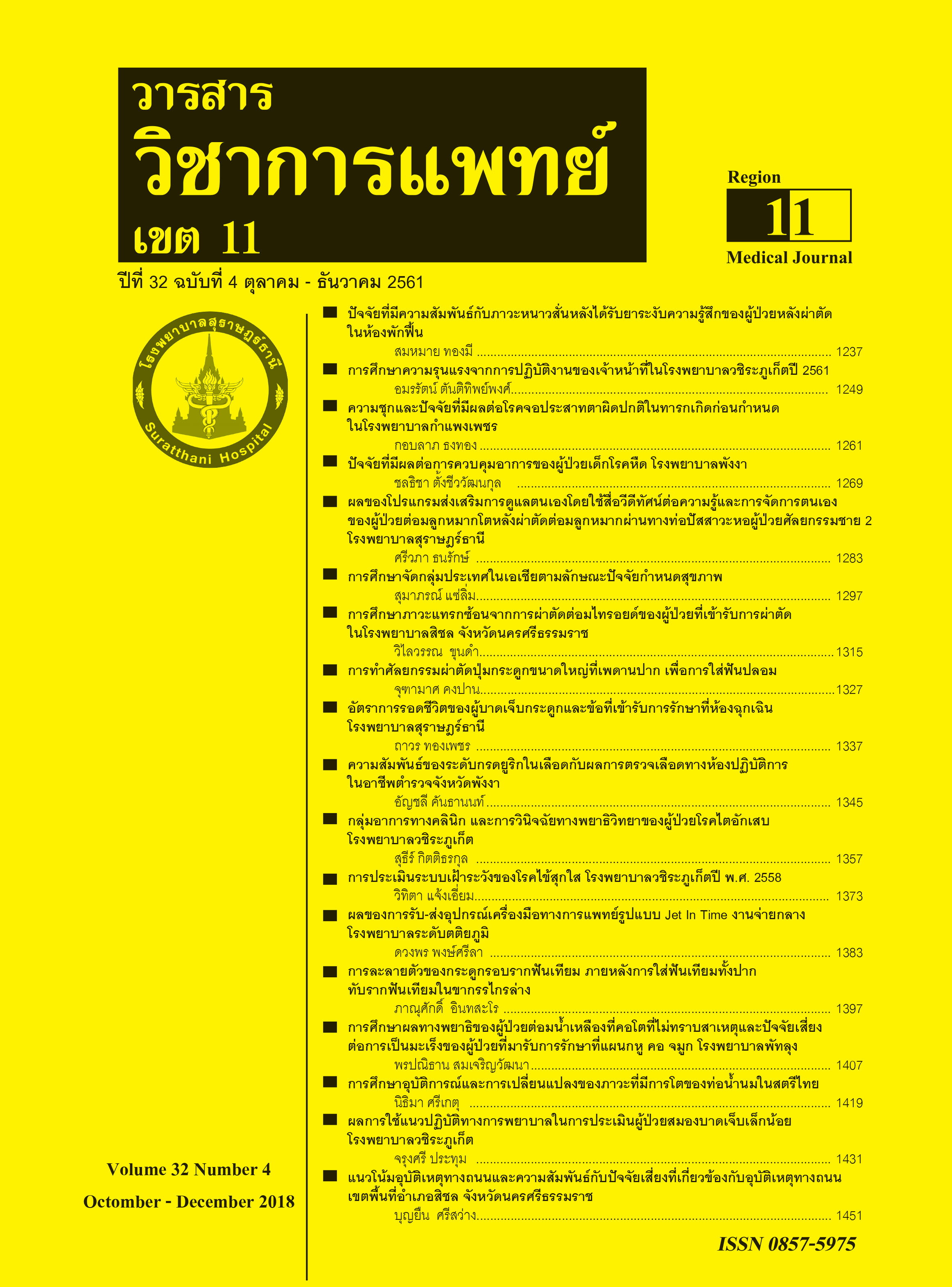Classification of Countries in Asia Based on Health Determinants
Keywords:
Cluster analysis, Health determinants, AsiaAbstract
The objective of this study is to cluster the countries of Asia for targeting of Thailand to be one third of Asia in 2032-2036 under Twenty-year National Strategic Plan for public Health (2017-2036) and basing on health determinants 7 factor (53 indicators) for 47 countries in Asia between 2001-2017 from updated report of 4 sources (WHO, UN, UNDP and WB). The data was analyzed by clustering (Hierarchical cluster analysis by standardized and squared Euclidean distance) and Pearson Correlation (5 levels). The results of this study show that Singapore, Brunei Darussalam, China, South Korea, Japan, Kazakhstan, Qatar, Bahrain, Saudi Arabia, Israel have economic, social excluding health and environment clearly different from other countries. The similarity cluster pattern of all factors consists of Thailand, Sri Lanka, Malaysia, Turkey, Georgia, Iran, Cyprus. For health factor, Thailand is in the same group with Malaysia, Maldives, China, Japan, Singapore, South Korea, Jordan, Georgia, Labanon, Turkey, Iran, Brunei Darussalam, Bahrain, Cyprus, Israel, Kuwait, Oman, Qatar, Saudi Arabia, United Arab Emirates that are developing and developed countries. Thailand’ s Healthy life expectancy at birth is greater than mean and medium of Asia. Thailand is to face rather severe health problem compared with Asia from road traffic, suicide, tuberculosis, adolescent birth, alcohol consumption, homicide, household and ambient air pollution, shortage of medical personnel. Some health issues are still a problem such as mater and child, non-communicable diseases, poisoning. These health problem are related with life expectancy in a moderate to very high level in positive and negative relationship. The result indicates that health development conditions should be consider and focus with health determinants, especially population factor (dependency ratio in young and old ages, urban population); economic factor (gross domestic product); education factor (years of schooling); international factor (immigrants); labour factor (employment and unemployment); natural resources and environment (energy supply, CO2 emission).
References
all policies: Case studies from around the world. Adelaide: Government of South Australia and World Health Organization; 2017. p. 1-10.
StevensonA A, BrinsdonA S. Health in All Policies: Applying a health in all policies approach to the Greater Christchurch urban development strategy: the
experience to date in Canterbury, New Zealand. In Lin V, Kickbusch I, eds. Progressing the sustainable development goals through health in all policies: Case
studies from around the world. Adelaide: Government of South Australia and World Health Organization; 2017. p. 73-83.
Stone V. ed. Health in all policies: Training manual. Geneva: World Health Organization; 2015. p. 10-14.
World Health Organization. Health in 2015 from MDGs (Millennium development goals) to SDGs (Sustainable development goals). Geneva: WHO; 2015. p. 1-12.
Department of International Organizations, Ministry of Foreign Affairs of Thailand. Summary of Thailand’s voluntary national reviews on the implementation of the
2030 Agenda for Sustainable Development 2017. Bangkok: Department of International Organizations; 2017. p. 1.
Strategy and Planning Division, Office of the Permanent Secretary, Ministry of Public Health. Twenty-Year National Strategic Plan for Public Health (2017-2036),
1st revised ed., 2nd ed. (2 February 2018). Nonthaburi: Strategy and Planning Division; 2018. p. 37-96.
World Health Organization. World health statistics 2017: monitoring health for the SDGs, Sustainable Development Goals. Geneva: WHO; 2017. p. 85-103.
Department of Economic and Social Affairs, Statistics Division. World statistics pocket book 2017 edition. New York: United Nations; 2017. p. 33-262.
United Nations Development Programme Human development report 2016: human development for everyone. New York: UNDP; 2016. p. 191-269, p. 198-205.
World Bank Group. World development indicators 2017. Washington DC: WB; 2017. p. 10-101.





